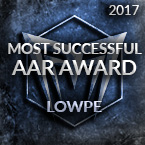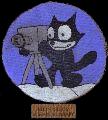John 3rd
Posts: 17178
Joined: 9/8/2005
From: La Salle, Colorado
Status: offline

|
I went back thorugh and looked in the RA Website. Here is the official air description written by FatR in 2013:
This is FatR's Commentary on Japanese Air Development:
This scenario assumes, that with Yamamoto assuming the position of the Aeronautics
Department's head in 1936 and becoming the Naval Minister later, he intensifies Japanese
naval aviation development a bit, and attempts to optimize the utilization of limited
engineering and production resources. Chief engineers of aircraft design teams are given
slightly greater input in formulating development directions and cooperation between various
aircraft manufacturers is assumed to be somewhat improved.
In particular, the concept of dedicated landbased interceptor (the Jack) is abandoned and the
Mitsubishi fighter design team under Jiro Horikoshi remains free to concentrate all of its efforts
on modifying A6M and creating its successor A7M. Horikoshi's proposal to install the more
powerful Mitsubishi Kinsei engine on Zero is approved in 1942, instead of late 1944, and A7M
is developed to use Mitsubishi Ha43 engine, as he desired, from the beginning. A6M3 is
developed into a whole line of Zeros that sacrifice range in favor of superior armament and
pilot protection, and eventually are officially designated as pure landbased models. IJN
maintains the policy of sticking to just one singleengine fighter airframe, until Kawasaki team
develops N1K1J Shiden as a private initiative (this happens slighltly earlier than in RL,
because alternate projects of landbased interceptors, that tied Kawanishi resourses, do not
exist). It is adopted as a stopgap measure until availability of A7M.
As a side effect of greater effort put into development and production of Mitsubishi Kinsei (Ha
33) and Mitsubishi Ha43 engines, several planes that historically used these engines are
added to the mod (if they existed only as prototypes by the war's end), or accelerated.
Aircraft weapon development is streamlined, with a push for unification with IJAAF in this area
(historically, IJN and IJA did cooperate in aircraft weapon production, in this scenario their
cooperation becomes much broader). Instead of attempts to produce licensed German
machine guns, that ultimately failed to provide the fleet with sufficient numbers of them, IJN
switches to the more powerful Army 7.7 cartridge and eventually adopts 12.7 Ho103, the first
aircraft HMG developed in Japan. This allows for improved armament on some planes, mostly
2E bombers.
This scenario also assumes mild overall boost to Japanese aircraft industry (at the cost of
reduction in starting resources). As a result, several planes that historically faced severe
problems with transition from prototypes to mass production, such as B6N, D4Y and G4M2,
become available a bit earlier. G8N1, the Japanese 4E bomber that was successfully tested but
not massproduced in real life, becomes available in 1945.
In addition, there are many minor tweaks to various aircraft, intended to make their statblocks
and performance closer to historical. The changes that can affect gameplay most noticeably
include:
Early Japanese fighters (Ha35 Zeros and Ki43) have their highaltitude MVR reduced.
G4M has slightly better durability, G3M slightly worse, to give G4M an edge over the older
plane it historically had.
E16A1 Paul no longer has artificially reduced normal range.
Ki44 uses Nakakima Ha34 engine, instead of Ha35, for historical accuracy.
Late Ki61 versions are slightly improved. Ki100s are significantly improved. In RL they were
supposed to be good, particularly Ki100, but in AE they are very underwhelming.
Ki67Ib does not lose the ability to carry torpedoes.
Old Russian fighters no longer have unparalleled MVR. Their clear superiority to Nate has to
go.
Following aircraft were added to this scenario (all but new Zeros and G3M4Q existed in RL as
prototypes or even production models):
A6M3b Zero. Replaces A6M3a and emphasized armor and weapons instead of range.
A6M4, A6M4J, A6M8J. Successors to A6M3b that follow the same design philosopshy but
use Mitshubishi Ha33 engine and serve as IJN GroundBased Interceptors.
A7M3. The historical successor to A7M2. Carriercapable and features 6x20mm armament.
A7M2 factory upgrades to it, instead of A7M3J.
B7A3. The historical armored successor to B7M2. Uses Mitsubishi Ha43 engine.
D4Y5. Mitshubishi Ha43, armor. D4Y3 upgrades to it. (D4Y4 was a kamikaze plane in RL.)
G3M4Q. ASW patrol version of Nell.
G8N1. Fast, tough, longranged 4E bomber.
J6M1. IJN version of Ki83.
N1K4A. Carriercapable Shiden.
N1K5J. Highaltitude interceptor Shiden. Uses Mitsubishi Ha43 engine.
Yasukuni. IJN version of Ki67. "Yasukuni" might actually be the name of the naval unit, that
employed these bombers in RL, but I can't find any other designation for them.
SPECIAL THANKS to the Air Design Team of RA: FatR, BKlooste, NYGiants59, and
JWE/Symon. Air Artwork Thanks go to Red Lancer.
Another important note is that these changes are split about 90% for the IJN and 10% for the
IJA. The Army's OOB doesn't hardly change whatsoever.
Other Air Notes:
All forward IJN air units start with modern aircraft and are at full strength
A Training and Cadre Program is instituted in 1940 by Yamamoto which causes nearly all
IJNAF units to see a net reduction of 1015 points in experience on December 7th. The benefit
to this change is later IJN pilots start with higher experience in 1942 and 1943.
The air complement to the ground units of the 9th Air Fleet also starts at cadre strength with
minimal experience and older aircraft (Claudes, Nells, Mavis) in Kyushu on Dec 7th. When fully
trained and filled out this powerful unit provides 3 Daitai of Fighters, 2 Daitai of Level
Bombers, 1 Daitai of DiveBombers, 1 Daitai of Torpedo Bombers, 3 Chutai of ShortRange Air
Search and 3 Chutai of LongRange Air Search.
The need for improved Carrier Air Search is recognized at the start of the war and a later sees
the addition of five Chutai-Sized Judy units.
Several Air Units start in different locations for the beginning of the war.
_____________________________
|
 Printable Version
Printable Version





























 New Messages
New Messages No New Messages
No New Messages Hot Topic w/ New Messages
Hot Topic w/ New Messages Hot Topic w/o New Messages
Hot Topic w/o New Messages Locked w/ New Messages
Locked w/ New Messages Locked w/o New Messages
Locked w/o New Messages Post New Thread
Post New Thread